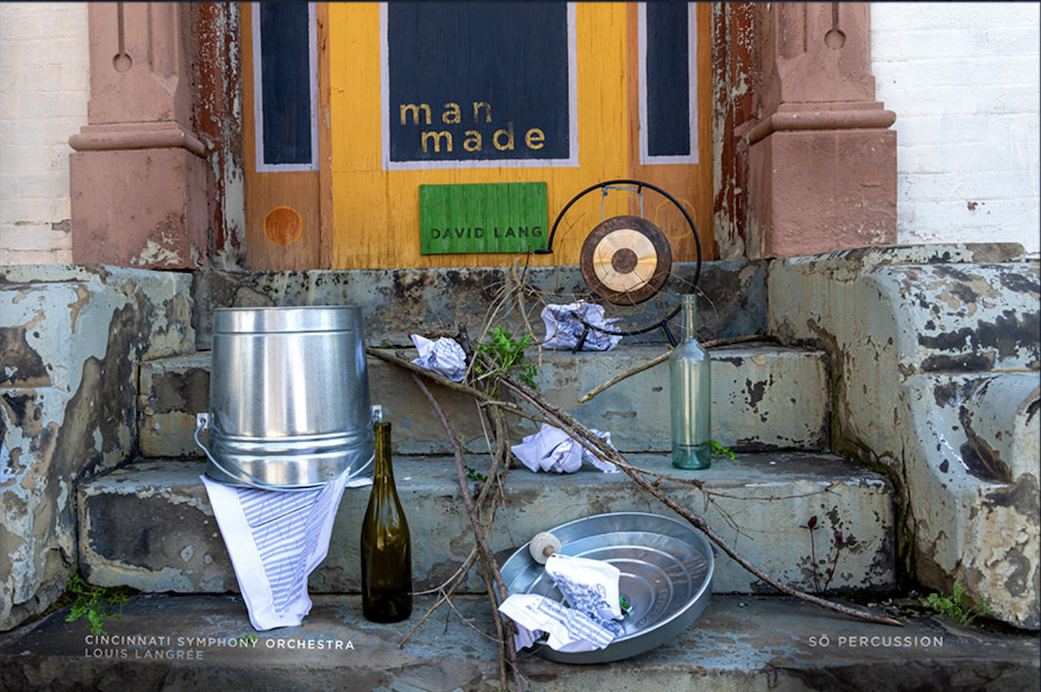The Fanfare Cincinnati label releases David Lang’s “Man Made”, performed by Sõ Percussion and the CSO.
Premiered at the Barbican Centre in London in May 2013 by the BBC Symphony Orchestra and the American percussion quartet Sõ Percussion, David Lang composed Man Made with Philip Glass’s Concerto Fantasy for Two Timpanists and Orchestra in mind. Lang’s aim was to provide complementary scores for the percussionists of the quartet and those of the orchestra itself. In fact, the concerto was written expressly for Sõ Percussion, an ensemble that often uses found or self-made objects in its performances. The role of the orchestra’s instrumentalists, as David Lang explained on his website, was to “translate” the sound of the objects used by the Americans and replicate it with the sound of the percussion instruments of a symphony orchestra. At the beginning of the work, for example, the soloists snap thin tree twigs, which the orchestral percussionists translated with woodblocks, marimba and xylophone.
Eight years after that world premiere, on 25 September 2021, the Cincinnati Symphony Orchestra (CSO), conducted by Louis Langrée, offered a programme for which it hosted Sõ Percussion performing Man Made, and that concert, which was recorded live, has now been released by Fanfare Cincinnati, the CSO’s own label.
The piece, which was given its US premiere by Gustavo Dudamel himself with the Los Angeles Philharmonic, offers a counterpoint to the leisurely pieces for which Lang is best known – most notably his The Little Match Girl Passion, for which he received the 2008 Pulitzer Prize for music -. Don’t expect noisy avalanches as in Edgar Varèse’s Ionisation or Xenakis’s Pleiades, because, although after the faint opening, with the famous snapping of twigs (and a slight amplification so that you can also hear some of the twigs falling to the ground) the music becomes dizzying and full of zigzagging movements, it is never intended to bewilder the viewer. Let me digress: Lang is one of the three founding composers of the Bang on a Can organisation, named after John Cage, the first composer to bang on a can and the first to break an amplified twig and call those sounds music.
In addition to twigs, the members of Sõ Percussion bang on tuned wine bottles and a trash bin, as well as conventional instruments such as xylophones and steel drums, to which the orchestra’s percussionists respond first as what Lang has defined as translators, capturing the sounds of the soloists and then transmitting their translation to the rest of the orchestra. The strings and winds find their own asymmetrical rhythms, with tonally colourful percussive attacks. There are four cycles in all, and in each of them the orchestra slowly grows in sound and complexity, transforming and hiding the soloists, just as it happens in nature: we transform our natural environment, build around it, and soon there is no trace left. But Man Made – or “made by man” – does not become an apocalyptic dystopia: nature, like energy, is not lost, only transformed and sometimes even improved.
